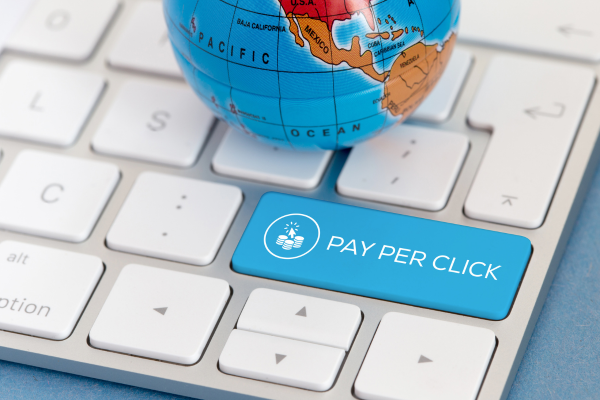Table of Contents
TogglePay-Per-Click Advertising (PPC)

Pay-Per-Click (PPC) advertising is a Digital Marketing strategy where advertisers pay a fee each time their ad is clicked. It’s an effective way to buy visits to your site rather than earning them organically. PPC drives targeted traffic, ensuring your brand gets noticed by the right audience. Let’s explore the core aspects of PPC in detail.
Understanding Pay-Per-Click Advertising (PPC) Advertising
PPC is a method of online advertising where advertisers bid for ad placements in search engine results, websites, or social media platforms. For instance, when someone searches “best digital marketing tools,” businesses bidding on that keyword might have their ad displayed at the top of the search results.
PPC is beneficial because advertisers only pay when a user interacts with their ad, making it cost-effective and result-oriented.
How Pay-Per-Click Advertising (PPC) Works
Ad Auction:
PPC platforms like Google Ads run auctions where businesses bid on keywords.
Ad Rank:
The position of your ad depends on your bid amount and Quality Score, a measure of your ad’s relevance and quality.
Cost-Per-Click (CPC):
Advertisers are charged based on how often users click on their ads.
This system ensures that the most relevant ads appear to users, improving their experience and increasing advertiser ROI.
Core Components of a PPC Campaign
Keywords:
Keywords are the foundation of any PPC campaign. Advertisers must research terms their target audience is searching for and bid on them strategically. Tools like Google Keyword Planner can help identify high-performing keywords.
Ad Copy:
A compelling ad copy encourages users to click. Including a call-to-action (CTA) like “Sign Up Now” or “Learn More” can increase click-through rates.
Landing Pages:
The user experience doesn’t end at the ad. A well-designed, relevant landing page aligned with the ad ensures users take the desired action, such as making a purchase or filling out a form.
Budget Management:
Effective PPC campaigns require precise budget allocation. Setting daily or monthly limits helps avoid overspending while maximizing ROI.
Types of Pay-Per-Click Advertising (PPC) Ads
Search Ads:
Appear on search engine results pages when users search for specific terms.
Display Ads:
Visual ads that appear on partner websites within the Google Display Network.
Shopping Ads:
Feature product images, prices, and links directly in search results.
Video Ads:
Short commercials that run on platforms like YouTube.
Remarketing Ads:
Target users who have previously visited your site but didn’t convert.
Advantages of Pay-Per-Click Advertising (PPC) Advertising
Instant Results:
Unlike SEO, PPC delivers immediate visibility and traffic.
Precise Targeting:
Advertisers can narrow down their audience by location, demographics, interests, and behavior.
Cost Control:
Set your budget and adjust it as needed to avoid overspending.
Measurable Performance:
Tools like Google Ads provide real-time data on impressions, clicks, and conversions.
High ROI:
Properly managed PPC campaigns can yield significant returns on investment.
Challenges of Pay-Per-Click Advertising (PPC) Advertising
High Competition:
Bidding wars for popular keywords can drive up costs.
Click Fraud:
Unethical clicks from competitors can inflate costs.
Complex Management:
Managing a PPC campaign requires expertise and constant optimization.
Tools for Pay-Per-Click Advertising (PPC) Campaign Management
Google Ads:
The most popular platform for search and display ads.
SEMrush:
Provides insights into competitor strategies.
WordStream:
Simplifies campaign management.
SpyFu:
Helps analyze competitor keywords and ad strategies.
Best Practices for Pay-Per-Click Advertising (PPC) Campaigns
Conduct Keyword Research:
Continuously refine and expand your keyword list.
Optimize Ad Copy:
Test multiple versions of your ads to find the best performer.
Use Negative Keywords:
Filter out irrelevant searches to avoid wasting budget.
Monitor Performance:
Track metrics and adjust your strategy as needed.
Implement A/B Testing:
Experiment with different ad elements to maximize results.
Pay-Per-Click Advertising (PPC) advertising is a powerful tool for driving targeted traffic and achieving business goals. By understanding its mechanisms and implementing best practices, businesses can effectively reach their audience, improve conversions, and boost revenue. Whether you’re a beginner or a seasoned marketer, PPC offers endless opportunities to grow your brand online.

